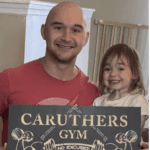How to Progress Your Squat for Functional Strength
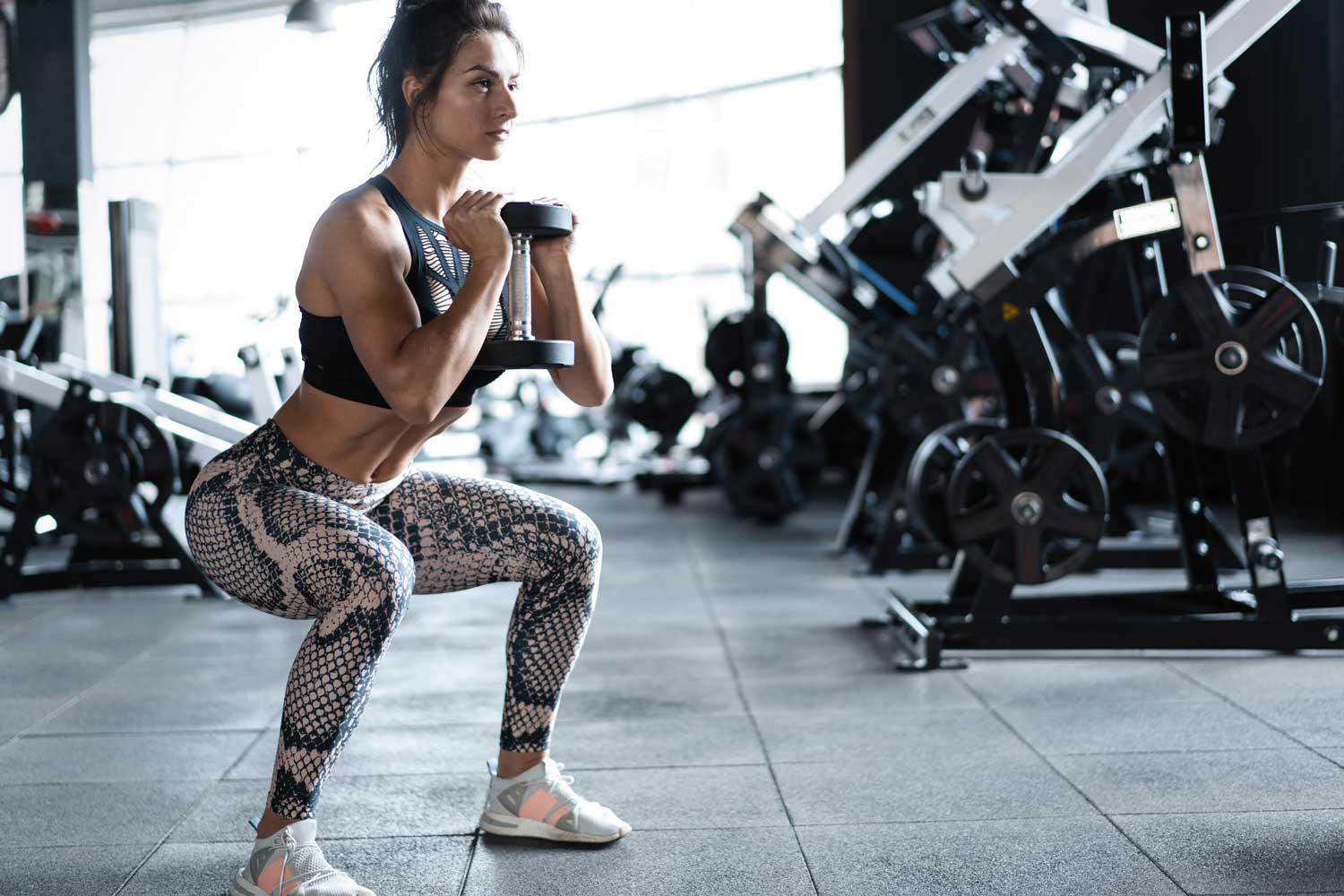
Squats are a hot topic in the strength and conditioning world, and that fact isn’t going away any time soon. With so many resources out there on squatting, how does a novice know where to start? Cory Caruthers is a trainer and ACSM certified Exercise Physiologist who’s been an athlete himself for 15 years. As a dad, it’s hugely important for him to model a healthy lifestyle for his kids. And that means knowing how to squat well into old age. In this guide, he outlines proper squatting mechanics (including the function of each joint) and how to work up to barbell back squats using technique progressions and kettlebells.

Stronger Legs & Glutes Just Make Life Easier
Squatting is a fundamental movement pattern for human physiology. We do it on a daily basis every time we sit down or pick something up off the floor. The ability to squat well helps your performance in sports and increases your mobility and quality of life as you age. A full range of motion squat counteracts the chronic musculoskeletal problems we see so often in our society—weak glutes, hunched-back posture, a weak core and torso.
Everyone should have the ability to squat, but for many people that means relearning how to squat properly.
The barbell back squat is considered the king of all leg exercises, but beginners whose squat form needs work shouldn’t necessarily start with a barbell back squat. When done properly, the back squat improves your overall strength and power, but when you lack ankle, hip, or thoracic mobility, squatting with a bar can be more harmful than rewarding.
A good coach will encourage progressions that lead up to the barbell instead of just jumping right into the deep end with it. Get ready to build up your strength, stability, and mobility before squatting with a barbell.
Anatomy of the squat
First, let’s review basic squat mechanics. The squat is known as a leg exercise, but if you look at the joints and surrounding muscles, it’s essentially a full body exercise.
Here’s a breakdown of which joints are involved and what they do during the squat.
- Foot: stability
- Ankle: mobility
- Knee: stability
- Hip: mobility
- Lumbar spine (low back): stability
- Thoracic spine (upper back): mobility
Your joints alternate between stability and mobility. When you lack stability in a joint, the joints above and below it will have to compromise their mobility to be more stable. Similarly, when you lack mobility in a joint, the joints above and below will try to compensate.
Think of the joints in your body as a chain. When one link in the chain can’t do its job, it makes the whole chain weak.
Many people new to lifting weights have tight hips and stiff ankles—putting them under a barbell is usually not pretty. It pays to address their mobility issues and find a squat variation that works best for them, then progress from there.
A good squat will look about the same in your body regardless of the variation. The difference will be what kind of weight you’re using and how you hold it.
The Marketplace: Shop Expert Programming from Real Coaches
Sometimes all you need to reach your destination on your fitness journey is an expert guide. We’ve got you covered.
The TrainHeroic marketplace is the only place to purchase programming from the World’s best coaches, delivered through the immersive training experience of the TrainHeroic app.
Browse from thousands of programs for any goal and every type of athlete.
Or, join a monthly programming membership to connect with a real coach and community of athletes training just like you. Try any programming subscription free for 7 days.
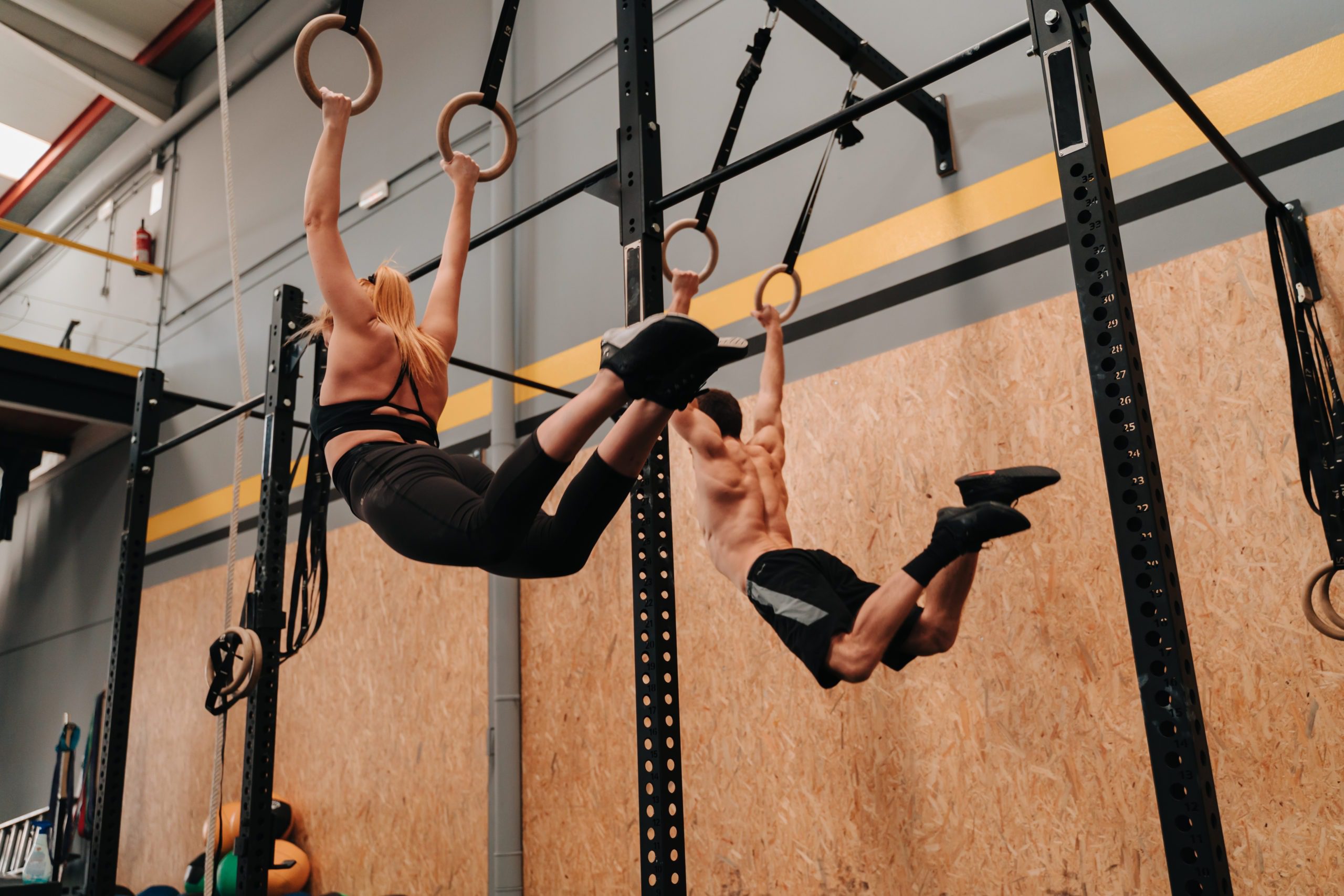
Basic squat points of performance
Position your feet just outside shoulder width, toes straight forward or slightly pointing out. Use some trial and error here. Play with your stance to find your best position that allows full range of motion. Brace your core, keeping your ribs stacked over your pelvis. Don’t let your low back arch.
With a neutral spine and tall chest, hinge back slightly at the hips. Bend your knees to descend into the bottom position of a squat. Keep your feet flat and knees pushing out.
Go as low as you can while keeping a neutral spine. I like to use a box to help determine how low I can go or use a camera to record yourself.
Drive your feet into the ground and squeeze your glutes to come up. As you stand up from the bottom position, stay braced in your core and keep your chest up.
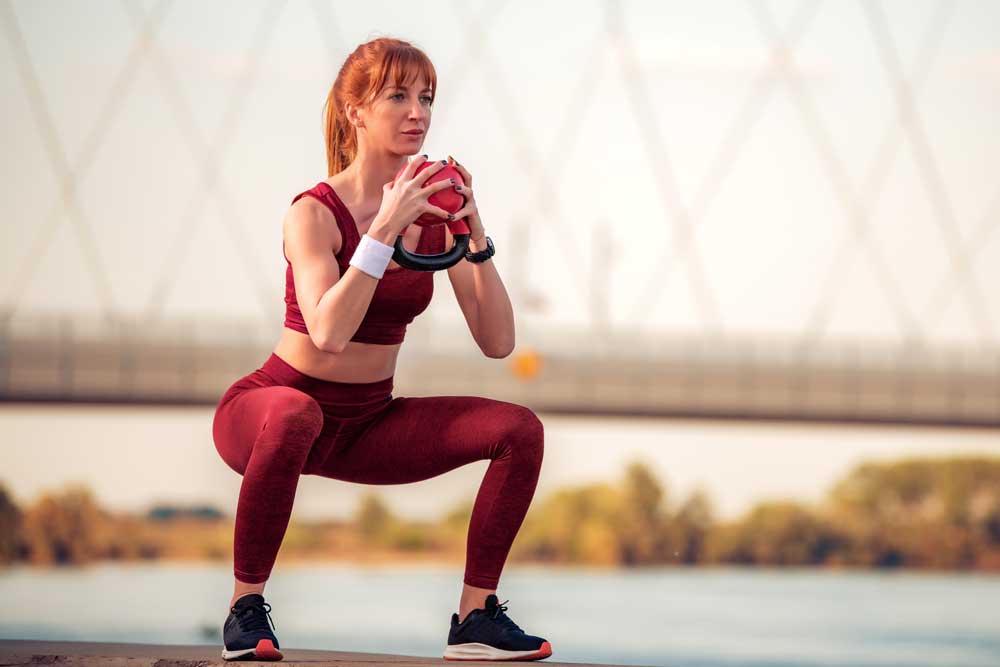
How to Progress From Unweighted Squats to Barbell Squats
Air Squat (bodyweight)
For newer athletes who haven’t really lifted weights before, I always start by assessing their bodyweight squat. A standard air squat readily shows your balance abilities and joint mobility issues.
Use a box to help determine your squat depth before your form breaks down. Place a box just a step behind you and try squatting down to it. Tap the box with your butt and come back up. This way you’ll learn to push your hips back when squatting and get a feel for your depth.
Use a pair of 5lb plates, a slant board or something else to elevate your heels if you have ankle mobility issues. Squatting with your heels elevated gives you access to a greater range of motion in the joints up the chain, which increases hip mobility and muscle recruitment.
Goblet Squat
The next progression of the squat is the goblet squat. This variation is great for building your squat pattern because it changes your center of balance, allowing you to sit back in your hips while keeping your chest upright. The weight acts as a counterbalance.
With the weight being held at your chest, your core has to work harder, keeping your spine neutral. The goblet squat also doesn’t compress your spine like supporting a barbell does, which makes it a safer option for athletes with back injuries.
The limiting factor of the goblet squat is the upper body. Your hands are holding the weight at chest level, so your upper body will determine how heavy you can go. Heel-raised goblet squats are an awesome option to account for ankle mobility issues and to focus on your quads.
Double KB Front Squat
This next progression helps you load your lower body more than a classic goblet squat, since you’re holding a kettlebell in each hand. You’re still avoiding spine compression, but working your legs, glutes, and core harder. You also get the counterbalance effect to improve your squat movement pattern.
Double KB front squats also work on shoulder stability—you need to hold and balance the kettlebells while squatting. Eventually you’ll experience some shoulder fatigue, so your upper body strength is somewhat a limiting factor.
This is a nice transition between goblet squats and front squats, especially since the front squat requires more mobility in your lats and wrists.
Barbell Front Squat
To do the barbell front squat, you’ll need to balance the bar in the “front rack position”—on the front/top of the shoulders, supported by your hands. You’ll need to drive your elbows up in order to secure the bar, so this movement can be demanding on your wrists and lats if you have mobility issues.
Take time to warm up your wrists and shoulders so you can feel confident holding the bar in your front rack. Keep in mind you don’t need to grip the bar with your whole hand to balance it in the front rack. Most athletes just support the bar on their fingers.
With this squat variation, you will be able to hit your quads a little more. Your upper back also works hard to prevent flexion. Front squatting builds strength in your squat pattern and a foundation for power cleans, while putting less demand on your spine/low back.
Barbell Back Squat
Looking back at the other squat variations, you can see the progression of the weight from being held in front of you to supported on your back. Each progression leading up to the barbell back squat is reinforcing the movement pattern and building the required mobility and stability to handle the barbell on your back.
A barbell on your back puts some stress on your spine, specifically your lower back. Which is why it’s important to build yourself an effective foundational squat pattern for core, leg, and glute strength.
Bonus Hard Mode: Overhead Squat
After you’ve made significant progress on your coordination and mobility, and you can handle a solid barbell on your back, try the barbell overhead squat. Supporting the bar overhead in a wide grip is just as challenging as it sounds!
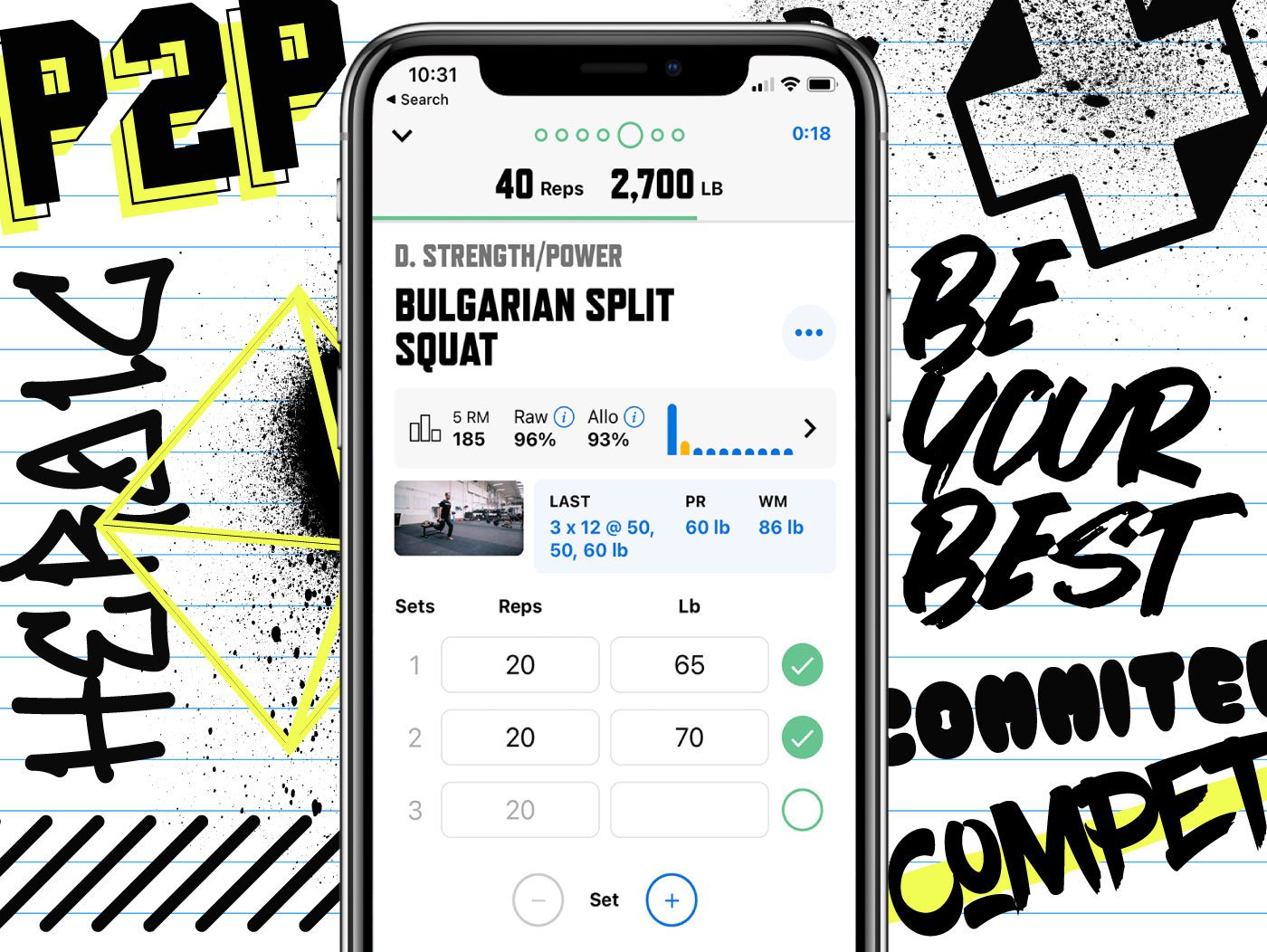

DOWNLOAD
trainheroic’s
free APP
Common Faults of the Squat Pattern
The squat can sometimes get a bad rap over causing knee pain and the idea that letting the knees drive over the toes can be harmful. I’m here to say that is a myth. I fully support the “knees over toes” philosophy.
Letting your knees come over your toes as you descend into a squat actually builds more stability in the knee joint and allows you to get into a full range of motion with your hips. A better range of motion with your squat will engage more muscle fibers, meaning better opportunity for muscle growth.
Again, the squat pattern is a fundamental movement pattern. We’ve been squatting since we could learn how to stand and walk as toddlers—if you actually watch a toddler squat, they have their knees over their toes. The issue is often when someone lacks foot stability and ankle mobility.
With these issues come overpronation of the foot causing the knees to cave in (called knee valgus). This knee cave stresses your knee joints in an awkward direction. Another issue with lack of ankle mobility is the heels coming up in the squat. This is the body’s way of searching for mobility, again putting a lot of strain in the knee joint.
Other common issues in the squat pattern:
- Overextension in lumbar spine (arching your low back, also called anterior pelvic tilt)
- Hip shifting to one side or the other
- Upper back collapsing forward (lack of thoracic mobility or strength)
- Excessive forward lean
- Hips rising faster than torso
Some of these issues are either mobility or stability problems in one or more joints. Motor control is also a factor, but that comes with time and practicing the squat pattern. Learn about your weakness, work on correcting these issues and you’ll be moving better and stronger than before.
Be smart with your training
This goes for lifters of every level: learn how to progress your exercises in an intelligent way that’s optimal for your body. This doesn’t just apply to the squat but with all exercises. Instead of jumping right into the hardest version of a movement, it pays to use gradual progressions.
Related articles
3 Ways to Improve Mobility Without Stretching
Are you still trying the endless foam rolling and stretching exercises to get that deep squat position? We know how important mobility is for great, or even GOOD performance. All professional athletes have some comfortability in end ranges of motion. So, what else do...
The Ultimate Guide to Lunges: Queen of all Glute Exercises
Your glutes are the largest muscle group in your body. They’re responsible for almost everything your legs do—walking, running, jumping, squatting, lunging, and just standing upright. As far as moving through space goes, strong glutes are the bedrock of overall...
A Beginner’s Guide to Steel Mace Training
Author: Jesse Grund
Mace training will make you a better mover without it’s not confining you to a fixed space or predetermined range of motion. Second, it’s an offset load with 80 to 90 percent of the weight in the head. You’re also constantly having to resist rotation, which creates greater core engagement.

Join the community
Sign up for the latest training news and updates from TrainHeroic

About TrainHeroic
Support
Made with love, sweat, protein isolate and hard work in Denver, CO
© 2021 TrainHeroic, Inc. All rights reserved.
